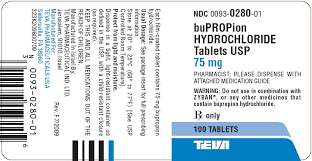 Loss
Loss
- Absence of an object, person, body part, emotion, idea or function that was valued
- Actual loss is identified and verified by others
- Perceived Loss cannot be verified by others
- Maturational Loss occurs in normal development
- Situational Loss occurs without expectations
- Ultimate Loss (Death) results in a lost for a dying person as well as for those left behind, can be viewed as a time of growth for all who experienced it
Grieving Process (Theories of Grief, Dying and Mourning)
1. 3 Phases of Grief
- Protest- lack of acceptance, concerning the loss, characterized by anger, ambivalence and crying
- Despair- denial and acceptance occurs simultaneously causing disorganized behavior, characterized by crying and sadness
- Detachment- loss is realized; characterized by hopelessness, accurately defining the relationship with the lost individual and energy to move forward in life.
2. Kubler-5 Stages of Grieving
- Denial – characterized by shock and disbelief, serves as a buffer to mobilize defense mechanism
- Anger– resistance of the loss occurs, anger is typically directed toward others
- Bargaining – deals are sought with God or other higher power in an effort to postpone the loss
- Depression– loss is realized; may talk openly or withdraw.
- Acceptance– recognition of the loss occurs disinterest may occur; future thinking may occur.
3. Worden’s 4 Tasks of Mourning
- Accept the reality of the loss, the loss is accepted
- Experience the pain of grief, healthy behaviors are accomplished to assist in the grieving process.
- Adjust to the environment without the deceased, task are accomplished to reorient the environment, i.e. removing the clothes of the deceased from the closet.
- Emotionally relocate the deceased and move forward with life, correctly align the past, the present & look towardsthe future
Anticipatory Grief
- Expression of the symptoms of grief prior to the actual loss, grief period following the lost may be shortened and the intensity lessened because of the previous of grief; for example, a child told that a family move is expected may grieve about losing friends prior to actually living
Complications of Bereavement
- Chronic Grief – symptoms of grief occur beyond the expected time frame and the severity of symptoms is greater; depression may result.
- Delayed Grief – when symptoms of grief are not expressed and are suppressed, a delayed reaction of grief occurs, the nurse should discuss the normal process of grieving with the client and give permission to express these symptoms
Symptoms of Normal Grief
- Feelings include sadness, exhaustion, numbness, helplessness, loneliness, and disorganization, preoccupation with the lost object or person, anxiety, depression.
- Thought patterns include fear, guilt, denial, ambivalence, anger
- Physical sensations include nausea, vomiting, anorexia, weight loss or gain, constipation or diarrhea, Diminished hearing or sight, chest pain, shortness of breath, tachycardia
- Behaviors include crying, difficulty carrying out activities of daily living and insomnia
Nursing Health Promotion (to facilitate mourning)
- Help client accept that the loss is real by providing sensitive, factual information concerning the loss
- Encourage the expression of feelings to support people; this build relationships and enhances the grief process
- Support efforts to live without the diseased person or in the face of disability; this promotes a client’s sense of control as well as a healthy vision of the future
- Encourage establishment with new relationships to facilitate healing.
- Allow time to grief, the work of grief may take longer for some; observe for a healthy progression of symptoms.
- Interpret “normal” behavior by teaching thoughts, feelings, and behaviors that can be expected in the grief process
- Provide continuing support in the form of the presence for therapeutic communication and resource information.
- Be alert for signs of ineffective coping such as inability to carry out activities of daily living, signs of depression, or lack of expression of grief.































